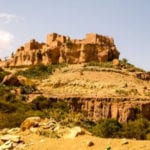 Music
Music  Music
Music  History
History 10 Less Than Jolly Events That Occurred on December 25
 Weird Stuff
Weird Stuff 10 Funny Ways That Researchers Overthink Christmas
 Politics
Politics 10 Political Scandals That Sent Crowds Into the Streets
 Weird Stuff
Weird Stuff Ten Bizarre Facts About The Doge Meme
 Our World
Our World 10 Ways Your Christmas Tree Is More Lit Than You Think
 Movies and TV
Movies and TV The 10 Coolest Stars to Set Sail on The Love Boat
 History
History 10 Things You Didn’t Know About the American National Anthem
 Technology
Technology Top 10 Everyday Tech Buzzwords That Hide a Darker Past
 Humans
Humans 10 Everyday Human Behaviors That Are Actually Survival Instincts
 Music
Music 10 Surprising Origin Stories of Your Favorite Holiday Songs
 History
History 10 Less Than Jolly Events That Occurred on December 25
 Weird Stuff
Weird Stuff 10 Funny Ways That Researchers Overthink Christmas
Who's Behind Listverse?

Jamie Frater
Head Editor
Jamie founded Listverse due to an insatiable desire to share fascinating, obscure, and bizarre facts. He has been a guest speaker on numerous national radio and television stations and is a five time published author.
More About Us Politics
Politics 10 Political Scandals That Sent Crowds Into the Streets
 Weird Stuff
Weird Stuff Ten Bizarre Facts About The Doge Meme
 Our World
Our World 10 Ways Your Christmas Tree Is More Lit Than You Think
 Movies and TV
Movies and TV The 10 Coolest Stars to Set Sail on The Love Boat
 History
History 10 Things You Didn’t Know About the American National Anthem
 Technology
Technology Top 10 Everyday Tech Buzzwords That Hide a Darker Past
 Humans
Humans 10 Everyday Human Behaviors That Are Actually Survival Instincts
10 Fascinating Facts about Wildlife Bridges
Humans have continued to build and expand their cities, encroaching on acres upon acres of animal habitats. Sadly, many animals get hurt or killed while trying to cross man-made roads. This leads to diminishing animal populations, a lack of biodiversity, and a de-segmentation of animal hunting and living grounds. The good news is that human beings recognized the peril our roads have put animals in and have implemented ways to reconnect and construct safe passage for animals by constructing wildlife crossings.
These wildlife crossings facilitate safe passage by providing animal-friendly alternate routes. These passages come in different forms, such as bridges, tunnels, and dams. Many wondered if animals would be smart enough to use artificial crossings. In fact, there was no need to worry because animals are brilliant and, in fact, embraced these artificial crossings in every shape, form, and size. Wildlife crossings have aided countless species, from crabs to cougars, to name but a few.
So, while we still don’t know why the chicken crossed the road, we know how. Below is a list of fascinating facts about wildlife bridges and crossings throughout the world.
Related: 10 Animals Humans Need To Survive
10 Eco-Ducts
European countries, including the Netherlands, Switzerland, Germany, and France, have been building an assortment of structures to reduce roadkill for decades. In the Netherlands, wildlife crossings are called eco-ducts. There are approximately 600 of these structures in the Netherlands alone. These eco-ducts are built on protected lands and cannot be mined, drilled, or hunted on. There are currently plans to construct even more eco-ducts in the Netherlands.
Other countries are also finding innovative ways to create and build these structures. Some have sponsored design competitions, like the Yangjaegogae Eco-bridge Design Competition in Seoul, South Korea. The winning design mimics the sloping mountains that it connects, enabling the many creatures inhabiting the area to safely cross the very busy eight-lane highway below.[1]
9 Not a New Invention
The 17th-century French used bundles of branches to create fish ladders, which acted like steps in steep water. This helped fish bypass obstructions and get where they needed to go. Fish ladders are often constructed of rocks, lumber, or logs and can aid fish in upstream migration. While it’s fun to think of fish climbing ladders, we all know fish don’t have legs, so these fish ladders help fish find the food, mates, other resources they need to go to carry out their business of being fish.
Richard McFarland, a Canadian lumber mill owner, designed a clever method to help marine creatures avoid his dam. He had his fishway structure patented in 1837. While there are several ways to construct a successful fish ladder, McFarland’s was the first of its kind to earn a patent. Using fish ladders is quite common today, especially in rough waters where fish have difficulty swimming upstream. [2]
8 Biodiversity
Wildlife crossings have definitely improved the conservation of wildlife. The result is an increase in animal populations within those areas and greater biodiversity among species. Biodiversity is the variety of life on earth. In a habitat or ecosystem, biodiversity provides natural and biological resources for its inhabitants. When biodiversity decreases, all species can suffer a lack of resources and even the death of living populations.
In Japan, engineers have constructed “Turtle Tunnels” underneath train tracks to preserve the turtle population and to ensure trains do not decimate the turtle population. A similar turtle tunnel was built in Massachusetts under Route 44. The road divided two populations of spotted turtles, limiting their potential survivability—with fewer turtles from a different genetic pool, the adaptability to the changing environment and climate lessens. The turtles need”new blood” to survive.[3]
7 From Mice to Grizzlies
In Canada, the Banff National Park is now home to 44 wildlife passages: 6 overpasses and 38 underpasses. These wildlife crossings were first constructed as part of a road improvement project beginning in 1978. These bridges allow wild animals passage over the Trans-Canada Highway, which sees almost 18,000 cars per day traveling through the park. Currently, numerous different species have used the bridge, including deer, lynx, coyotes, wolves, wolverines, and bears.
Monitoring by wildlife cameras shows that various species have different preferences for how to escape from traffic. Grizzlies, deer, and moose prefer the open air of overpasses, while cougars are more likely to stay hidden in dark shadows or under bridges with ample coverings provided by tunnel walls. Black and brown bears might choose either option depending on who or what they encounter during their wanderings through town. Many of the small culverts prove useful to the carious mice, voles, and other small critters that call the park home.[4]
6 Christmas Crabs
Thousands of wildlife crossings exist all over the world, including a crab bridge on Christmas Island in Australia. Christmas Island is in the Indian Ocean and is home to approximately 45 million fire-engine red crabs. These crabs make their home on an island measuring only 52 square miles with a human population of about 2,000.
To help the crabs out while they breed and spawn, their human neighbors constructed a bridge over the main road so the crabs could cross safely from forest to ocean. The crab bridge has become a tourist attraction in its own right, and people travel from all over the world to see the crabs cross over the bridge. It is quite a sight to see these brightly colored crabs crawling over this 16-foot man-made bridge. Additional underpasses also assist the crabs, but the bridge is by far more spectacular to watch.[5]
5 Avoiding A Cat-astrophe
The state of Florida has constructed over twenty wildlife crossings to help save the endangered Florida panther. The Florida Panther is a rare, elusive animal that was nearly hunted to extinction in the 1970s. Besides being hunted, panther deaths by vehicular collision are a very large threat. Intensive human intervention over 40 years ago has helped the panther population grow from 20 individuals to an estimated population at least ten times greater than it would have been without our help.
Unfortunately, these beautiful cats are still very much endangered even with the construction of the underpasses created for their use. Panthers need a continuous habitat to roam and hunt. As a result, the wildlife corridors are crucial for their survival. Covered with the plants and flowers of the area, the wildlife corridors in Florida give panthers the connected habitat range they need for survival and to increase their numbers. (Unfortunately, these crossings won’t offer any help to the Carolina Panthers this year!)[6]
4 No Monkeying Around
Monkey Bridges are built in Costa Rica to deter animals from using electrical wires to move from place to place and accidentally getting electrocuted. Since the installation of monkey bridges throughout Costa Rica, monkeys have learned to use them instead of the less safe alternatives. Monkey bridges are generally made from rope and allow the primates to safely get from place to place.
Since their installation, it hasn’t been only monkeys that have used the bridges. Other animals have also been spotted using them, including sloths, anteaters, and even porcupines. Apparently, the animals know a good thing when they see it, and many animals have been seen using the bridges with their babies on their backs. It’s quite a sight to see a monkey crossing a bridge overhead while traveling through the rainforest of Costa Rica. I’m not monkeying around when I say wildlife bridges are a great idea![7]
3 Over the Down Under Bridge
In Australia, wildlife bridges and tunnels have been successfully used by koalas, who initially were thought to be unable to figure them out. Darryl Jones, an ecologist from Griffith University in Australia, had to “eat his words” after discovering that within three weeks of their construction in 2016, koalas were using the bridges and tunnels built for them without fail. It’s a good thing, too, because koalas are inarguably the most adorable animal in the world.
Passageways built for animals in Australia often have lush greenery on them, making it practically impossible for the animals to realize they are traveling over a man-made structure, leading more species to embrace using these corridors. Australia is also home to a wildlife bridge that was constructed originally to help squirrel gliders. Instead, wrens, finches, and other feathered wildlife are also known to use this bridge.[8]
2 Keeping It Natural
Since the 1990s, thousands of wildlife crossings have been constructed in America. These include underground tunnels and bridges that can safely accommodate a variety of animals, including elk or moose. These corridors reduce road collisions with landscape features that reconnect them back to their habitats—and these newly built ones are more advanced because they make sure not only cars but also pedestrians (when desired) get a safe passage across highways.
Wildlife crossings are becoming more popular for providing connectivity between different areas of land. Engineers construct these habitat corridors using the natural vegetation found in the surrounding areas. Wildlife bridges are covered in native plants and trees to make them appear like a natural part of the landscape and help invite animal passage. The crossings often work most effectively when implemented alongside highway fencing, placed strategically at one or both sides so that wildlife can be funneled toward it by an exit corridor made up primarily of these green bridges.[9]
1 Going Bigger
The largest wildlife crossing in the world has recently undergone construction in California, just northwest of Los Angeles. This crossing is to serve as a model for the rest of the world. Its location at the base of the Santa Monica Mountains will provide safe access over the 101 freeway for pumas, deer, coyotes, rabbits, squirrels, lizards, and many other species. It will also have a pedestrian and bike path.
This wildlife crossing, named the Wallis Annenberg Wildlife Crossing, is an overpass-style bridge stretching across ten lanes of the Ventura Freeway. It is expected to be completed by year’s end of 2025. This particular wildlife crossing is being constructed in response to the dwindling population of mountain lions in the area. Unable to cross the freeway safely, lions have become genetically isolated, and their numbers have sadly decreased.
An underpass previously built near the current construction site was supposed to facilitate mountain lion crossing under the freeway. Unfortunately, several mountain lions were killed attempting to travel the underpass. When the construction of the Wallis Annenberg Wildlife Crossing is complete, mountain lions in the Santa Monica Mountains will be able to reach the Simi Valley Mountains and beyond. It is the hope of conservationists and animal lovers alike that the mountain lions in the area will see a spike in their population and diversity. As a Southern California resident, I very much look forward to visiting this wildlife bridge when it is complete.[10]








